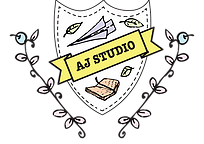Workshop Update
Not Just Drawing—Questioning
This term, one of our most surprising lessons involved glitter, stickers, and all things shiny. It looked like chaos. But underneath the sparkle was a real question:
What is kitsch?
What makes something “bad taste”—and who gets to decide?
Is copying always wrong?
Or can it be clever?
What is kitsch?
What makes something “bad taste”—and who gets to decide?
Is copying always wrong?
Or can it be clever?

We explored these questions by deliberately exaggerating their artwork, borrowing from pop culture, and playing with irony. In doing so, they weren’t just creating—they were developing aesthetic judgement. Learning to recognise when something is too much, and when “too much” might just be the point.
Meanwhile, in another workshop, we were floating above the earth—or at least imagining they were. They drew cities from the sky, traced movement through colour, and mapped places that don’t exist on paper, but live in memory. The task wasn’t to get the streets “right.” It was to reimagine what maps are for—to move beyond direction and into meaning.
Meanwhile, in another workshop, we were floating above the earth—or at least imagining they were. They drew cities from the sky, traced movement through colour, and mapped places that don’t exist on paper, but live in memory. The task wasn’t to get the streets “right.” It was to reimagine what maps are for—to move beyond direction and into meaning.

These two lessons couldn’t look more different. One is gaudy, loud, and unapologetic. The other, quiet and layered. But both do the same thing: they give young minds permission to think for themselves. To question taste. To reframe rules. To experiment with form and content and see where it takes them.
Because in our studio, art isn’t a series of techniques to master—it’s a way of making sense of the world.

Write your awesome label here.
Sign up to our mailing list today!
Thank you!
-
one-click unsubscribe
-
tips, deals and offers

